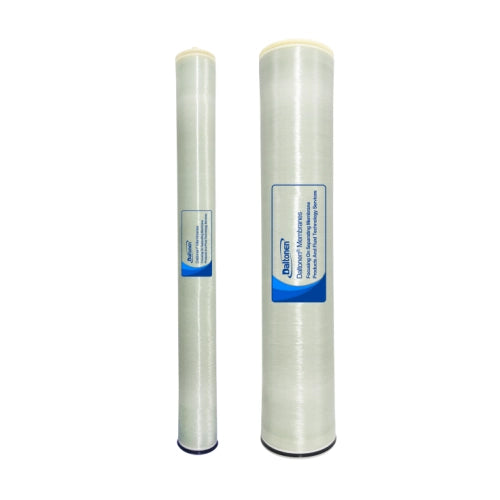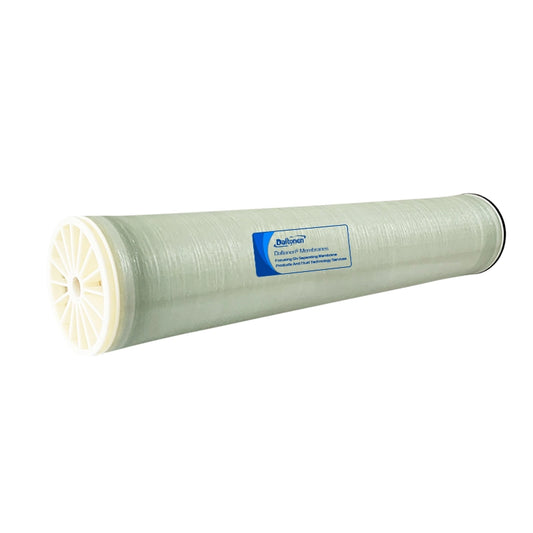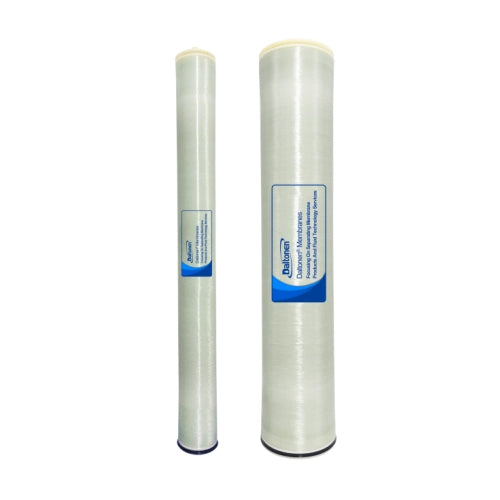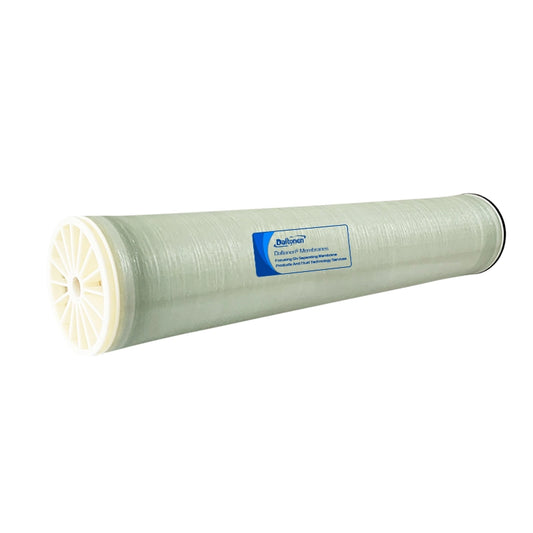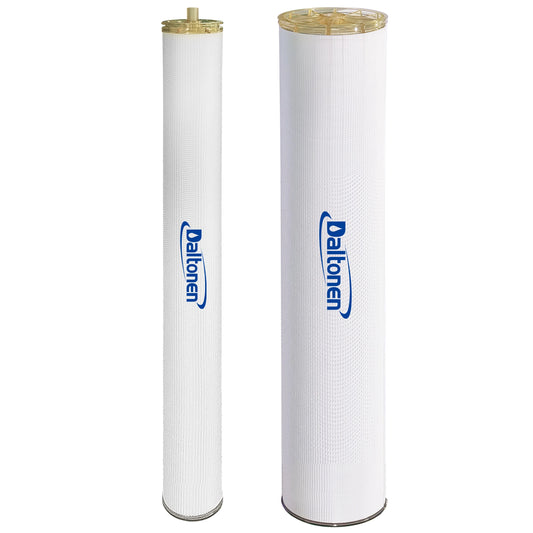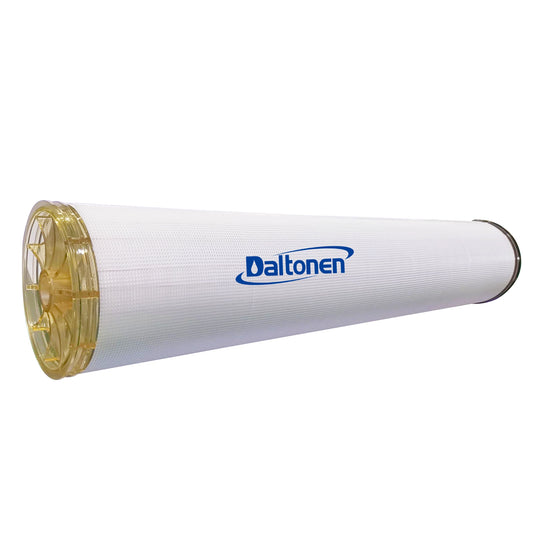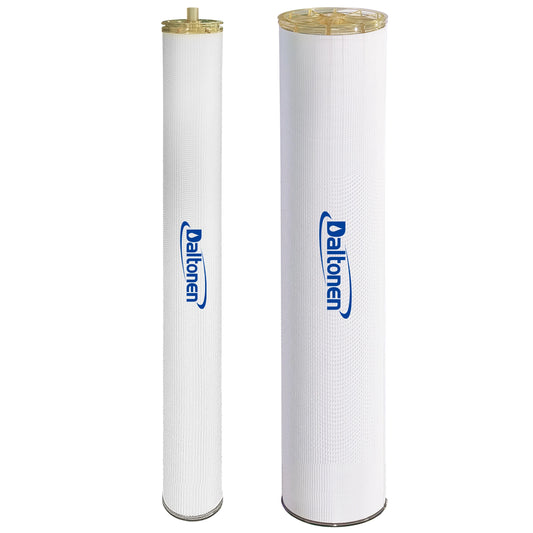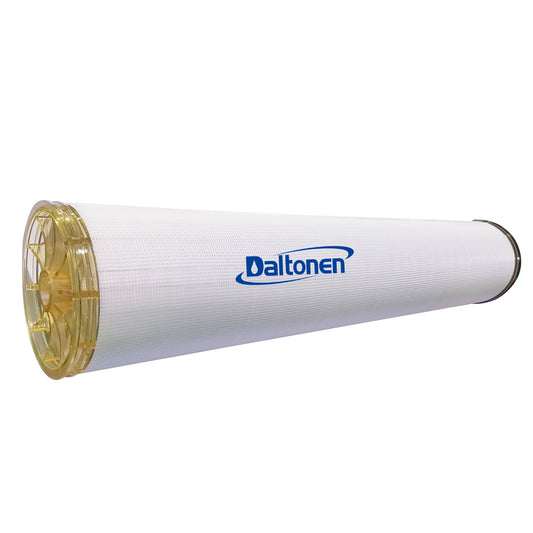What Flow Rate Pump Should Be Used for RO Membrane Cleaning
What Flow Rate Pump Should Be Used for RO Membrane Cleaning
- Selection of RO Membrane Cleaning Pump Flow Rate
1.1 Calculation Method for Cleaning Pump Flow Rate
The calculation of the flow rate for an RO membrane cleaning pump requires consideration of multiple factors to ensure efficient and thorough cleaning. The following are the specific calculation steps and methods:
1.1.1 Determination of Basic Parameters
Firstly, it is necessary to clarify the relevant parameters of the RO membrane system, including:
- Number of RO Membranes: Different numbers of membrane elements require different cleaning flow rates to meet cleaning needs. For example, if there are 114 RO membranes, and each membrane has a cleaning flow rate of 9 cubic meters per hour, then the total cleaning flow rate is 114 9 = 1026 cubic meters per hour.
- Membrane Element Specifications: The size (such as 8 inches) and structure (such as 6-core membrane shell) of the membrane elements will affect the cleaning flow rate requirements for a single membrane element.

1.1.2 Cleaning Flow Rate Calculation Formula
The formula for calculating the cleaning flow rate is:
Q cleaning = n * q single membrane
Where:
Q cleaning is the total cleaning flow rate (cubic meters per hour)
N is the number of RO membranes
q single membrane is the cleaning flow rate for a single membrane element (cubic meters per hour)
1.1.3 Adjustments in Practical Applications
In practical applications, the influence of the piping system must also be considered:
- Pipe Diameter and Length: The diameter (such as 0.1 meters) and length (such as 20 meters) of the pipes will affect the loss and distribution of flow. A larger pipe diameter and shorter pipe length help reduce flow loss, ensuring that the cleaning liquid can be evenly distributed to each membrane element.
- Volume Filling Coefficient: The volume filling coefficient of the container and pipes (such as 0.7 and 1) will also affect the actual cleaning flow rate. A higher filling coefficient indicates a higher space utilization rate of the container or pipe, allowing the cleaning liquid to contact the membrane elements more fully.
1.1.4 Example Illustration
To illustrate the calculation of the cleaning pump flow rate with a specific example:
- Suppose there are 114 8-inch RO membranes, with each membrane having a cleaning flow rate of 9 cubic meters per hour, a pipe diameter of 0.1 meters, a length of 20 meters, a container volume filling coefficient of 0.7, and a pipe volume filling coefficient of 1.
- According to the formula, the total cleaning flow rate is calculated as: Q leaning = 114* 9 = 1026 cubic meters per hour.
- Considering the influence of the pipes and container, the actual cleaning pump flow rate should be at least 1026 cubic meters per hour to ensure effective cleaning.
1.2 Factors Influencing Flow Rate Selection
When selecting the appropriate flow rate for an RO membrane cleaning pump, various factors must be considered to ensure the effectiveness of the cleaning process and the protection of the membrane elements:
1.2.1 Degree of RO Membrane Contamination
- Light Contamination: If the membrane elements are lightly contaminated, a relatively small cleaning flow rate can be used, but it must still be sufficient to flush away the contaminants.
- Heavy Contamination: For heavily contaminated membrane elements, a larger cleaning flow rate is needed to enhance the cleaning effect and ensure that the contaminants are thoroughly removed.
1.2.2 Water Temperature and Quality
- Water Temperature: The temperature of the water significantly affects the viscosity and permeability of the cleaning liquid. Higher water temperatures (such as 40°C) can reduce the viscosity of the cleaning liquid, improving its permeability and thus enhancing cleaning efficiency. Therefore, under high-temperature conditions, the cleaning flow rate can be appropriately reduced to save energy and cleaning liquid.
- Water Quality: The quality of the water directly affects the preparation and effectiveness of the cleaning liquid. If the raw water quality is poor, containing more suspended solids, colloidal particles, and organic matter, the preparation and usage of the cleaning liquid will increase. At this time, the cleaning flow rate should be adjusted according to the water quality to ensure that the cleaning liquid can fully contact and remove the contaminants.
1.2.3 Type and Concentration of Cleaning Liquid
- Type of Cleaning Liquid: Different types of cleaning liquids (such as acidic and alkaline cleaning liquids) have different flow rate requirements. Acidic cleaning liquids are typically used to remove inorganic salt scale and metal oxides, while alkaline cleaning liquids are used to remove organic matter and microbial contamination. The type of cleaning liquid affects its reaction speed with contaminants and the cleaning effect, thereby influencing the choice of flow rate.
- Concentration of Cleaning Liquid: The concentration of the cleaning liquid also affects the choice of flow rate. High-concentration cleaning liquids have stronger cleaning capabilities, but their usage and cost will also increase. When using high-concentration cleaning liquids, the flow rate can be appropriately reduced to save costs and reduce the impact on the membrane elements.
1.2.4 Equipment and Operating Conditions
- Performance of Cleaning Pump: The performance parameters of the cleaning pump (such as head and power) affect the choice of flow rate. Selecting an appropriate cleaning pump that meets the flow rate requirements while operating stably and providing sufficient pressure is essential to ensure the cleaning effect.
- Operating Conditions: The operating conditions during the cleaning process, such as cleaning time and circulation method, also affect the choice of flow rate. For example, during a long circulation cleaning process, the flow rate can be adjusted appropriately to ensure the uniform distribution of the cleaning liquid and the effective removal of contaminants.
1.2.5 Economic and Energy Efficiency Considerations
- Economic Considerations: Selecting the appropriate flow rate requires a balance between cleaning effectiveness and cost. Excessive flow rates increase the usage of cleaning liquid and the energy consumption of the pump, leading to higher costs; while insufficient flow rates may not achieve the desired cleaning effect, affecting the performance and service life of the membrane elements.
- Energy Efficiency: In meeting the cleaning requirements, selecting an energy-efficient cleaning pump and a reasonable flow rate can reduce energy consumption and operating costs. By optimizing the selection of flow rate, the energy efficiency of the cleaning process can be improved, achieving a win-win situation for economic and environmental benefits.
- Industry Standards and Technical Specifications
2.1 National Standard GB/T 23954-2009
The "Technical Specifications for RO System Membrane Element Cleaning" (GB/T 23954-2009) provides clear technical guidance and specification requirements for RO membrane cleaning, ensuring the standardization and normalization of the cleaning process.
- Technical Requirements: The standard specifies the requirements for parameters such as the pH value, temperature, and flow rate of the cleaning liquid during the cleaning process. For example, the pH value of the cleaning liquid should be chosen based on the material of the membrane elements and the nature of the contaminants. Typically, the pH value of acidic cleaning liquids is between 2-3, and that of alkaline cleaning liquids is between 10-12. Additionally, the temperature of the cleaning liquid is generally controlled between 30-40°C to enhance cleaning effectiveness and protect the membrane elements.
- Preparation Before Cleaning: The standard requires a detailed inspection of the membrane elements before cleaning, including their appearance and sealing performance, to ensure the safety and effectiveness of the cleaning process. At the same time, cleaning equipment should be calibrated and debugged to ensure its normal operation.
- Cleaning Steps: The cleaning process usually includes low-pressure water flushing, chemical cleaning, and high-pressure water flushing. Low-pressure water flushing is used to remove surface contaminants from the membrane elements, chemical cleaning achieves deep cleaning through the chemical reaction between the cleaning liquid and contaminants, and high-pressure water flushing is used to thoroughly remove residual cleaning liquid and contaminants.
- Assessment of Cleaning Effect: The standard stipulates the methods for assessing the cleaning effect, mainly through the detection of the water quality of the product after cleaning and the performance indicators of the membrane elements. For example, the water quality of the product after cleaning should meet the design requirements, and the performance indicators such as the desalination rate and water production of the membrane elements should be restored to normal levels.
2.2 Cleaning Technical Requirements and Acceptance Standards
The technical requirements and acceptance standards for RO membrane cleaning are important guarantees for ensuring cleaning effectiveness and the recovery of membrane element performance.
- Cleaning Technical Requirements:
- Preparation of Cleaning Liquid: The preparation of the cleaning liquid should be carried out strictly in accordance with the standard requirements to ensure that its concentration, pH value, and other parameters meet the specifications. For example, acidic cleaning liquids are usually composed of hydrochloric acid, citric acid, etc., while alkaline cleaning liquids are composed of sodium hydroxide, sodium carbonate, etc.
- Control of Cleaning Flow Rate: The cleaning flow rate should be reasonably selected based on the number, size, and degree of contamination of the membrane elements. Excessive flow rates may cause damage to the membrane elements, while insufficient flow rates may not effectively clean. Generally, the cleaning flow rate should be controlled at 1.2-1.5 times the design flow rate of the membrane elements.
- Control of Cleaning Time: The cleaning time should be adjusted according to the degree of contamination of the membrane elements and the cleaning effect. Typically, the time for acidic cleaning is 30-60 minutes, and that for alkaline cleaning is 60-90 minutes. Excessive cleaning time may cause excessive corrosion of the membrane elements, while insufficient time may not thoroughly clean.
- Acceptance Standards:
- Water Quality of the Product: The water quality of the product after cleaning should meet the design requirements, including indicators such as conductivity, turbidity, and microbial content. For example, the conductivity should be reduced to below 90% of the design value, and the turbidity should be less than 1 NTU.
- Performance of Membrane Elements: The performance indicators of the membrane elements, such as desalination rate, water production, and pressure difference, should be restored to normal levels. For example, the desalination rate should reach above 95% of the design value, and the water production should be restored to above 90% of the design value.
- Integrity of Membrane Elements: The membrane elements after cleaning should have no obvious damage, deformation, or leakage. By checking the appearance and sealing performance of the membrane elements, their integrity is ensured.

- Performance Parameters of Cleaning Pump
3.1 Selection of Head and Pump Type
When selecting the head of an RO membrane cleaning pump, multiple factors must be considered to ensure that the pump's performance meets the cleaning requirements. The selection of head should be based on the resistance of the membrane elements, the resistance of the piping system, and the required cleaning pressure. According to the data, the head of the cleaning pump is usually recommended to be 30 meters. In addition, the selection of the pump type is also very important. Common pump types include centrifugal pumps and plunger pumps:
- Centrifugal Pump: Suitable for systems with lower pressure and higher flow rates, with a simple structure and stable operation, applicable to low operating pressure RO systems below 2.0MPa. For example, for a small RO system, a centrifugal pump can be chosen to meet its cleaning needs.
- Plunger Pump: Suitable for systems with high pressure and low flow rates, capable of providing stable high-pressure water flow, applicable to seawater desalination systems and high-pressure RO systems above 5.0MPa. For example, in an RO system for treating high-salinity seawater, a plunger pump is a more appropriate choice.
3.2 Corrosion Resistance and Material Requirements
The chemical agents used in the cleaning process of RO membranes have a certain degree of corrosiveness, so the materials of the cleaning pump must have good corrosion resistance. Common corrosion-resistant materials include stainless steel and engineering plastics:
- Stainless Steel: Possesses excellent corrosion resistance and mechanical strength, capable of resisting the erosion of acidic and alkaline cleaning liquids, suitable for various chemical cleaning environments. For example, 316 stainless steel is widely used in the manufacturing of cleaning pumps.
- Engineering Plastics: Such as polypropylene, polytetrafluoroethylene, etc., have good chemical resistance and lightweight characteristics, suitable for some specific chemical cleaning environments. For example, polytetrafluoroethylene can be used to manufacture pump seals and some components to improve its corrosion resistance.
Selecting the appropriate pump materials and types can ensure the long-term stable operation of the cleaning pump in harsh chemical environments, extend its service life, and ensure the safety and effectiveness of the cleaning process.
- Precautions During the Cleaning Process
4.1 Preparations Before Cleaning
Sufficient preparations before performing RO membrane cleaning are key to ensuring cleaning effectiveness and the safety of the membrane elements. The following are several aspects that need special attention before cleaning:
- Close Inlet and Drain Valves: Ensure that the RO system is in a shutdown state, close all inlet and drain valves, and remove the connections between the inlet and drain pipes and the membrane components to prevent liquid leakage or equipment damage due to misoperation during the cleaning process.
- Check Membrane Components and Pipes: Carefully inspect the appearance and sealing performance of the membrane components, looking for cracks, deformations, or leakage. At the same time, check whether the piping system has blockages, damage, or loose connections to ensure that the cleaning liquid can pass smoothly and be evenly distributed to each membrane element.
- Clean Surrounding Environment: Clean up debris and dirt around the membrane components, keeping the cleaning area tidy to avoid contaminating the membrane elements or affecting the safety of the operators during the cleaning process.
- Prepare Cleaning Chemicals: Based on the type and degree of contamination of the membrane elements, select the appropriate cleaning chemicals. Common cleaning chemicals include acidic cleaning agents (such as citric acid, hydrochloric acid) and alkaline cleaning agents (such as sodium hydroxide, sodium carbonate). Prepare the cleaning liquid according to the requirements of the chemicals, accurately weighing and dissolving them in the cleaning water, ensuring that the concentration, pH value, and other parameters of the cleaning liquid meet the specifications.
- Calibrate Cleaning Equipment: Calibrate and debug the cleaning pump, cleaning tank, security filter, and other cleaning equipment to ensure their normal operation. Check whether the performance parameters of the cleaning pump, such as head and flow rate, meet the cleaning requirements, whether the volume of the cleaning tank is sufficient to accommodate the required cleaning liquid, and whether the filter elements of the security filter are intact to effectively filter impurities in the cleaning liquid.
- Personal Protective Measures: During the cleaning process, operators may come into contact with chemical agents, so they should wear appropriate protective equipment, such as rubber gloves, protective goggles, and protective clothing, to avoid harm to the skin, eyes, and other areas from the chemicals.
4.2 Assessment of Cleaning Effect
After the cleaning is completed, accurately assessing the cleaning effect of the RO membrane is an important basis for determining whether the cleaning is successful and deciding on subsequent operations. The following are some commonly used assessment methods:
- Water Quality Testing of the Product: Test the water quality of the product after cleaning, including indicators such as conductivity, turbidity, pH value, and microbial content. If the water quality of the product meets the design requirements or has significantly improved compared to before cleaning, it indicates that the cleaning effect is good. For example, if the conductivity is reduced to below 90% of the design value and the turbidity is less than 1 NTU, it indicates that the desalination performance and filtration performance of the membrane elements have been effectively restored.
- Performance Testing of Membrane Elements: Test the performance indicators of the membrane elements, such as desalination rate, water production, and pressure difference. If the desalination rate is restored to above 95% of the design value, the water production is restored to above 90% of the design value, and the pressure difference is significantly reduced, it indicates that the cleaning has effectively removed the contaminants from the surface of the membrane elements and restored their normal working performance.
- Visual Inspection of Membrane Elements: Perform a visual inspection of the membrane elements, observing whether there are any residual contaminants or damage on their surface. If the surface of the membrane elements is clean, with no obvious dirt, spots, or damage, it indicates that the cleaning process is thorough and has not caused secondary damage to the membrane elements.
- Analysis of Cleaning Liquid: Analyze the components of the cleaning liquid after cleaning, detecting the content and types of contaminants. If the concentration of contaminants in the cleaning liquid is significantly reduced and no new contaminants are found, it indicates that the cleaning process has effectively removed the contaminants from the membrane elements.
- Comparison of System Operating Parameters: Compare the system operating parameters after cleaning with those before cleaning, such as inlet pressure, water production flow rate, and system pressure difference. If the system operates more stably after cleaning, all parameters are within the normal range, and there is a significant improvement compared to before cleaning, it indicates that the cleaning has had a positive effect on the entire RO system.

- Summary
In the cleaning process of RO membranes, selecting the appropriate cleaning pump flow rate is a key factor in ensuring cleaning effectiveness and the recovery of membrane element performance. By comprehensively considering various factors such as the number of RO membranes, membrane element specifications, piping system, degree of contamination, water temperature and quality, type and concentration of cleaning liquid, equipment and operating conditions, economic and energy efficiency considerations, the flow rate of the cleaning pump can be reasonably determined. For example, for a system with 114 8-inch RO membranes, with each membrane having a cleaning flow rate of 9 cubic meters per hour, the total cleaning flow rate needs to reach 1026 cubic meters per hour. In addition, appropriate adjustments should be made based on the actual application of pipe diameter, length, and volume filling coefficient.
The national standard GB/T 23954-2009 provides clear technical guidance and specification requirements for RO membrane cleaning, including specific requirements for parameters such as the pH value, temperature, and flow rate of the cleaning liquid, preparations before cleaning,
cleaning steps, and assessment methods for cleaning effect. For example, the pH value of the cleaning liquid should be chosen based on the material of the membrane elements and the nature of the contaminants, with the pH value of acidic cleaning liquids between 2-3 and that of alkaline cleaning liquids between 10-12. The temperature of the cleaning liquid is generally controlled between 30-40°C to enhance cleaning effectiveness and protect the membrane elements.
In terms of cleaning pump performance parameters, the selection of head should be based on the resistance of the membrane elements, the resistance of the piping system, and the required cleaning pressure, usually recommended to be 30 meters. The selection of pump type is also very important, with centrifugal pumps suitable for systems with lower pressure and higher flow rates, and plunger pumps suitable for systems with high pressure and low flow rates. In addition, the materials of the cleaning pump must have good corrosion resistance, with common corrosion-resistant materials including stainless steel and engineering plastics.
During the cleaning process, sufficient preparations and accurate effect assessment are equally important. Before cleaning, it is necessary to close inlet and drain valves, check membrane components and pipes, clean the surrounding environment, prepare cleaning chemicals, calibrate cleaning equipment, and take personal protective measures. After cleaning, the cleaning effect can be accurately assessed through methods such as water quality testing of the product, performance testing of membrane elements, visual inspection of membrane elements, analysis of cleaning liquid, and comparison of system operating parameters.
In summary, reasonably selecting the flow rate of the RO membrane cleaning pump and following relevant technical specifications and standards can effectively improve cleaning effectiveness, extend the service life of membrane elements, ensure the stable operation of the RO system, and have important practical significance and application value.
